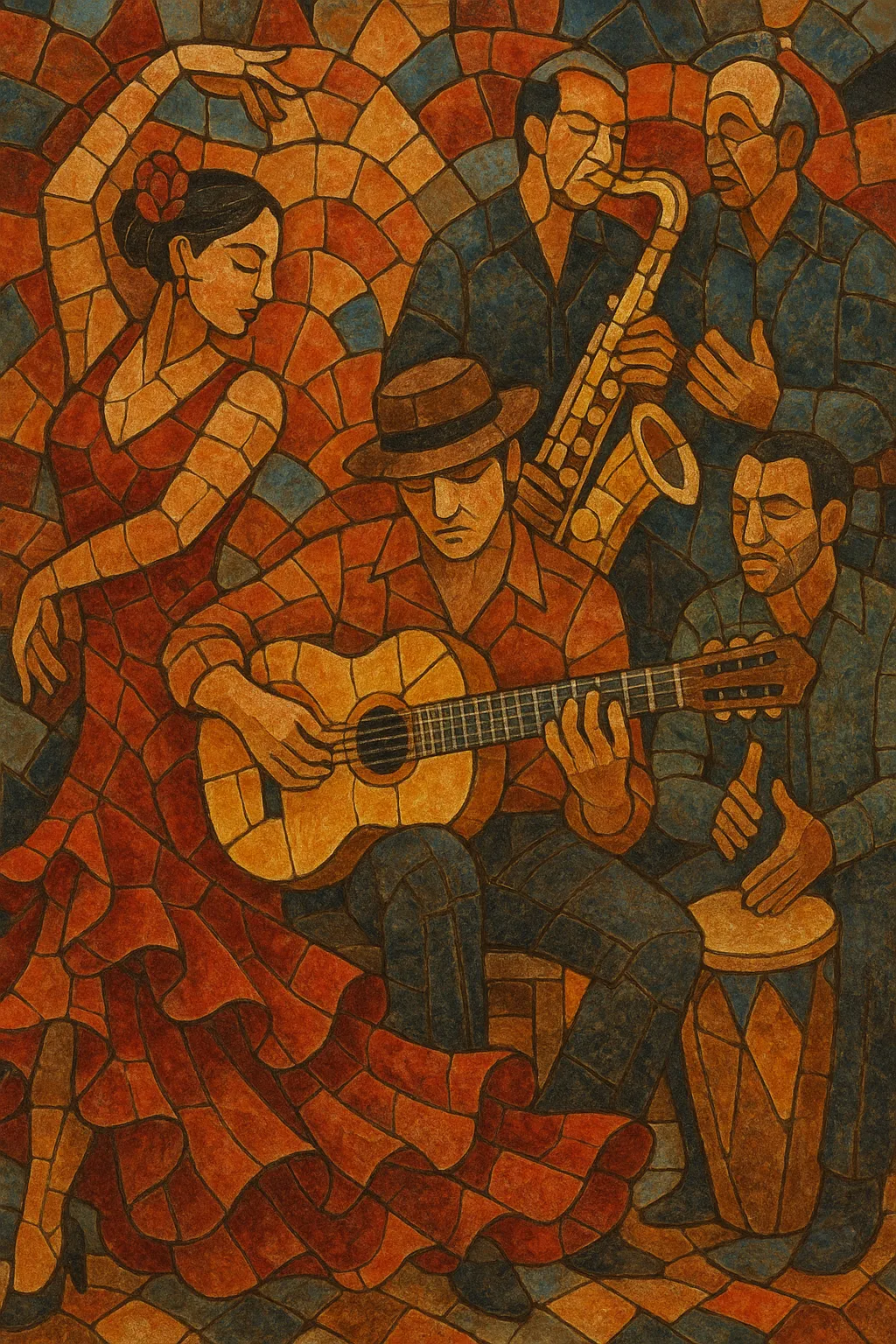Nuevo flamenco is a modernized, crossover evolution of traditional Andalusian flamenco that integrates pop, rock, and jazz aesthetics while preserving core flamenco compás (rhythmic cycles), guitar techniques, and cante (vocal) expression.
It is marked by the use of flamenco guitar alongside bass, cajón, handclaps (palmas), saxophone or flute, keyboards, and drum kit, yielding a more contemporary, often radio-friendly sound. Harmonically, it blends Phrygian/Phrygian dominant colors and modal cadences with jazz-inspired extensions and pop progressions.
Rhythmically, nuevo flamenco favors accessible palos like rumba (and tangos), while still drawing energy from bulerías and other 12-beat cycles. Its production commonly embraces studio polish, global grooves, and melodic hooks, making it a gateway for international audiences into the flamenco tradition.
Modernization within flamenco began with visionaries like Paco de Lucía, who expanded the guitar’s harmonic palette and ensemble context. He absorbed ideas from jazz, bossa nova, and classical music, and, with collaborators such as Rubem Dantas, popularized the cajón in flamenco ensembles. Camarón de la Isla’s landmark album “La leyenda del tiempo” (1979) blended flamenco cante with rock and jazz textures, foreshadowing the nuevo flamenco sensibility.
During the 1980s, Madrid’s label Nuevos Medios curated and promoted a younger generation under banners like “Joven Flamenco” and “Nuevo Flamenco.” Groups such as Ketama and Pata Negra fused flamenco forms with pop, rock, and Latin grooves, while jazz-minded players like Jorge Pardo and Tomatito helped solidify an improvisatory, cosmopolitan language. This period established the term “nuevo flamenco” as a distinct, forward-looking strand.
In the 1990s, the style achieved mainstream international reach. The Gipsy Kings’ rumba-driven pop, Ottmar Liebert’s “new flamenco” guitar albums, and artists like Jesse Cook brought the sound to global audiences, emphasizing melodic hooks, smooth production, and danceable compás. Meanwhile, virtuosos such as Vicente Amigo and Gerardo Núñez maintained deep ties to flamenco tradition while advancing technique and harmony.
Nuevo flamenco continues to evolve, intersecting with world fusion, chillout, and contemporary pop aesthetics. Artists experiment with electronic textures and urban rhythms, while others reaffirm traditional palos with modern arrangements. The style’s core remains the dialogue between flamenco’s compás and a broader international musical vocabulary.


